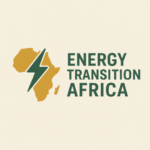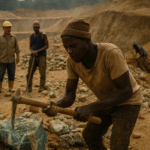Africa stands on the edge of an electrification revolution. The Mission 300 project, launched at the 2025 Sustainable Energy Dialogue, aims to provide electricity access to 300 million Africans by 2030. It’s a bold ambition. But the real question is: Will this initiative light up Africa, or leave communities powerless?
From Vision to Reality
Mission 300 is more than a number; it’s a promise. Energy poverty has stifled economic growth, education, and health outcomes for decades across the continent. Now, with the urgency of climate action and clean energy development, this initiative seeks to finally bridge the gap.
According to the Africa Energy Outlook 2024, over 570 million Africans still lack access to electricity. Mission 300 intends to cut that figure in half. The plan involves a mix of grid extensions, off-grid solutions like solar mini-grids, and strategic public-private partnerships.
The Promise of Transformation
If done right, Mission 300 could revolutionise Africa’s energy landscape. It offers the potential to:
- Power up schools, clinics, and businesses.
- Create green jobs through local infrastructure projects.
- Reduce reliance on diesel generators and kerosene lamps.
As we discussed in “Fossil Fuel Freedom: Why Nigeria Must Ditch Oil to Secure Its Future”, true sovereignty comes from sustainable energy systems built with local needs in mind.
Risks of Repeating the Past
But history offers a cautionary tale. Africa’s past electrification efforts often prioritised megaprojects over communities. Large dams displaced thousands. Grid expansions focused on urban centres, bypassing rural areas. Corruption and mismanagement plagued public contracts.
Mission 300 must not follow this path.
The risk is that, in the rush to deliver, governments may favour foreign contractors, import technologies with little local input, and prioritise speed over sustainability. This could recreate a system where power lines run overhead, but local people remain in the dark.
Who Will Own the Power?
A key challenge lies in ownership and governance. Who will control the new energy infrastructure? Will communities have a say in planning and benefits? Without clear frameworks for community engagement and benefit-sharing, Mission 300 risks becoming just another top-down initiative.
As highlighted in “Green Goals, Grey Areas: The Politics of China-Africa Energy Relations”, opaque contracts and external dependencies can leave Africa vulnerable.
Mission 300 must insist on:
- Community participation in planning and implementation.
- Local procurement and manufacturing to create jobs and skills.
- Transparent governance with clear reporting mechanisms.
Energy Without Extraction
Mission 300 also risks being co-opted by the same extractive models that have defined Africa’s energy sector. Large-scale solar farms or hydropower projects, if not properly managed, can displace communities and degrade ecosystems.
The push for renewables should not replicate the environmental and social costs of fossil fuel projects. Small-scale, decentralised solutions like solar home systems and mini-grids must be prioritised. They can deliver power where it’s needed most; rural areas, schools, and clinics.
The Regional Dimension
No country can achieve Mission 300 alone. Regional cooperation is essential. Cross-border infrastructure, knowledge-sharing, and collective bargaining for fair technology transfer will strengthen the initiative.
But this requires alignment. Fragmented policies, competition for foreign investment, and weak institutions could derail progress.
A Call to Action
Mission 300 is a generational opportunity. It can uplift millions, spark green industrialisation, and position Africa as a leader in sustainable energy. But it must be done differently.
- Empower local communities; don’t bypass them.
- Insist on transparency; don’t replicate opaque deals.
- Prioritise sustainability; don’t trade one form of environmental damage for another.
Africa doesn’t need another grand plan that looks good on paper but fails in practice. It needs a people-centred approach that delivers real change.
Because electrifying Africa isn’t just about flipping a switch, it’s about creating a future where no one is left in the dark.



